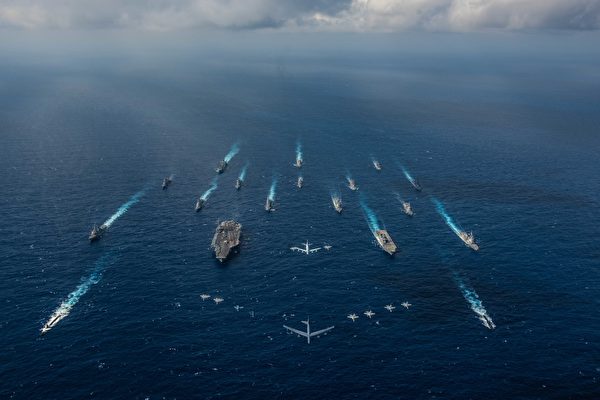The US Secretary of Defense, Lloyd Austin, held his first phone call with the newly appointed Japanese Defense Minister, Moto, with concerns rising over China’s increasingly aggressive actions in the Indo-Pacific region to unilaterally change the status quo. Both sides reaffirmed their commitment to closely cooperate and expand the presence of their militaries in the southwestern islands of Japan.
In a statement released by the Pentagon on Tuesday, the two defense chiefs reiterated their commitment to modernizing the US-Japan alliance’s command and control structures and expanding their bilateral presence in the southwestern islands of Japan.
The statement also emphasized the importance of deepening defense cooperation with regional partners to advance the shared vision of a free and open Indo-Pacific region.
As tensions in the Taiwan Strait escalate, Tokyo has shifted its military focus from northern Japan to the southwestern islands (the Ryukyu Archipelago).
In recent years, China has exploited gaps in Japan’s defense of the southwestern islands, often sending military aircraft and ships to traverse the region frequently.
The southwestern islands of Japan, also known as the Ryukyu Archipelago, extend southward from Japan to Taiwan and the Philippines. The range of the southwestern islands roughly stretches from the Osumi Islands in Kagoshima Prefecture to Yonaguni Island in Okinawa Prefecture, spanning about 1,200 kilometers, nearly equivalent to the maritime and airspace covered by Japan’s Honshu Island. This region is part of the concept of the “First Island Chain.”
The “First Island Chain” refers to a chain of islands formed in the Western Pacific, starting from the Kuril Islands in the north and stretching through Japan, Taiwan, the Philippines, to Borneo. After the outbreak of the Korean War, then-US Secretary of State John Foster Dulles proposed in 1951 to form a chain of islands to contain communist Soviet Union and China at sea, marking the beginning of the strategic concept.
Approximately 800 miles from northern Japan, the US Marine Corps’ newest force, the 12th Marine Expeditionary Unit, was established in November last year. The unit, converted from the US Marine Corps’ 12th Marine Regiment stationed in Okinawa, operates on islands in the southwest of Okinawa, located less than 100 miles from the nearest point to Taiwan.
Under the 1960 US-Japan Treaty of Mutual Cooperation and Security (revised US-Japan Security Treaty), the US military has deployed 54,000 personnel in Japan. Okinawa hosts over half of the US forces in Japan, including 70% of the US military bases, such as Kadena Air Base, a crucial outpost for projecting US Air Force power in the region.
In July this year, the Pentagon announced the upgrade of the US forces in Japan to the Joint Forces Headquarters (JFHQ), expanding its mission and operational responsibilities, while upgrading its readiness at Kadena, replacing 48 older F-15C/D fighter jets with 36 newer F-15EX fighters, and maintaining a rotation of fourth- and fifth-generation tactical aircraft at the base.
According to Newsweek, Defense Minister Moto expressed to the media that Japan and the US have acknowledged the unilateral attempts to change the status quo in the Indo-Pacific region through force or coercion are escalating.
Japan has accused Chinese coast guard vessels of conducting armed patrols near these islands, and Japan also expressed concern over the tense situation in the Taiwan Strait, emphasizing the importance of maintaining peace and stability between Taiwan and mainland China.
On Wednesday, Japan’s Foreign Minister, Takeshi Iwaya, expressed “serious concerns about the increasingly active Chinese military activities” and demanded an explanation from China regarding an incident where Chinese military aircraft violated Japan’s airspace in August.

